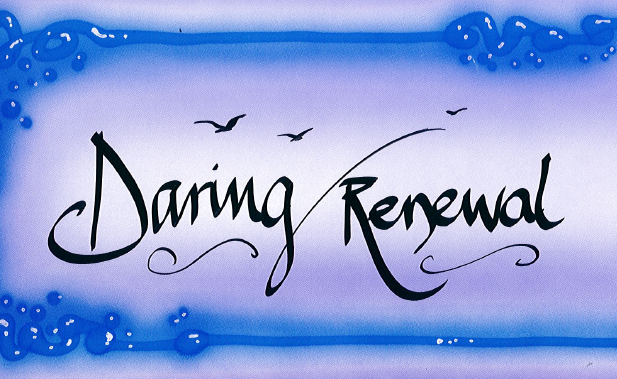Power and Strength
This article is taken from the Ideas in Action booklet, which also contains summaries of the Communication Model, the Selves Model and the Resonance Model, plus a piece about breathing. Power and strength are important themes in Living Alive Phase I.
The concepts of power and strength run through the Haven models. The terms describe ways of dealing with the sense of anxiety and helplessness that we first experience as infants and that remains with us through our lives, sometimes submerged, and sometimes overwhelming. Both power and strength are important factors in our development.
Power is our society’s dominant solution to anxiety and helplessness. In exercising our power we use our ego defence mechanisms to cover over and compensate for anxiety. We do this by attempting to control ourselves, situations, and other people. Through power, our angst and helplessness can seem more remote and we may achieve considerable security. In this way power can be helpful and effective; unfortunately, it tends also to limit growth.
Strength, with which we are generally less familiar, enhances growth. In strength, we investigate and accept the qualities we find within ourselves and use our ego adaptive skills, such as thought, judgment, reality testing, language and other forms of expression and creativity, to develop these qualities and grow.
In the Haven Selves Model, power is foreground in our development as we strive to attain a picture of who we think we should be, our Ideal Self. Although we may achieve much in this way, we often react to our inevitable falling short of this ideal and the abandonment of our Authentic Self by developing a pattern of self-hate. Through the self-compassion cycle (Breath, Awareness, Acknowledgment, Action, Appreciation), we can exercise and develop our strength, based on awareness and acceptance of our selves (including our striving) and opening up to others.
The foreground use of power in our development is also described in The Haven Resonance Model, in relationships of control, pleasing and conformity. This can lead to a ‘rigidity’ and a loss of connection with others and with our own authentic natures. Again, we may choose to soften our rigidity and rediscover connection with others through the resonance of our feelings and energy, allowing our strength to come foreground and promote growth.
The Communication Model also offers the possibility of connecting with others in a way that exercises and develops our strength. To develop strength through this model, we need to be aware of our intentions and, above all, ‘Check it Out’ with others and really hear what they say. The elements of the model by themselves – perceptions, interpretations, feelings, and actions – can equally well be used to control people and situations.
In The New Manual for Life, Bennet Wong and Jock McKeen list more than 30 pairs of words that exemplify the differences between strength and power approaches. The following are a few that regularly come up for discussion in Come Alive programs.
Vulnerability / Control
As children we learn to control ourselves in order to please others, starting with our parents. We continue throughout our lives to control ourselves in order to control others and our environment. This involves an emphasis on power. In vulnerability, where strength is more foreground, we accept and acknowledge our actual experience of ourselves, of others, and of the outside world. Then, with our own creativity and resources, we can begin to respond more to life rather than resisting it.
Field awareness / Field dependency
In field dependency our actions are governed by the field – that is, other people and our environment. Shackled to externals, we do not develop our internal sense of self. By taking account of the field and being sensitive to other people and events, without letting our actions be dictated by them, we develop autonomy and field awareness. Here the emphasis is on strength.
Self-responsibility / Victimhood / blame
Blame and victimhood are roles in a power orientation. In self-responsibility, we develop strength through accepting our own participation in events and owning our perceptions, thoughts, feelings and actions (including our tendencies to blame others or make ourselves victims).
Boundaries / Walls
When we approach life from a power position, we hide behind walls rather than living at our contact boundaries. Walls are brittle barriers, defences to keep the outside away. Boundaries, on the other hand, are flexible and involve sensitivity to both self and other. Through active choices about what we want and do not want at any given moment, we are able to define ourselves and come forward in a way that allows connection with other people.
Shades of grey / Black and white
In power positions, we tend to see situations and people in terms of black and white, good or bad, right or wrong. In strength, we are more willing to see real people in complex situations, rather than impersonal objects in a world of right and wrong.
Neither power nor strength is either ‘good’ or ‘bad’. Each is an important part of who we are. However, while we are all familiar with exercising power, we generally have much less experience of manifesting our strength. Programs at The Haven offer opportunities to investigate both orientations within ourselves and explore new possibilities for growth.






